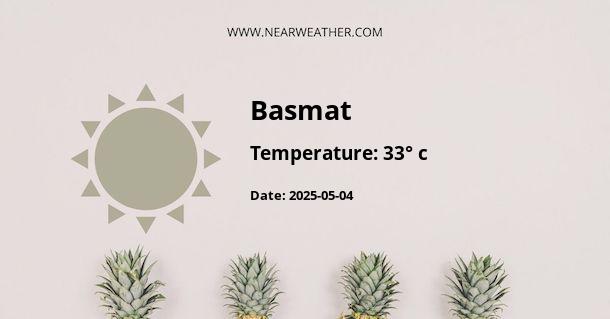Climate and Weather in Basmat, India
Located in the state of Maharashtra, Basmat is a town in the Hingoli district of India. The region experiences a tropical savanna climate with distinct wet and dry seasons. Understanding the climate and weather patterns in Basmat is crucial for residents, travelers, and businesses alike. In this article, we will explore the year-round weather conditions in Basmat, including temperature variations, precipitation levels, and seasonal changes.
Temperature
Basmat experiences hot summers and mild winters due to its location in a tropical region. The temperature in Basmat can vary significantly throughout the year. The hottest months are typically April, May, and June, with average daytime temperatures reaching around 40°C (104°F) or higher. The mercury drops during the winter months, with December and January being the coldest. During this time, temperatures range from 15°C (59°F) to 25°C (77°F).
It is important to note that temperatures can fluctuate between day and night in Basmat. During the summer months, nighttime temperatures can still remain relatively high, around 25°C (77°F) to 30°C (86°F). In contrast, winter nights can be quite chilly, with temperatures dropping to 10°C (50°F) or even lower.
Precipitation
Basmat receives the majority of its rainfall during the monsoon season, which typically lasts from June to September. This period is characterized by heavy downpours and occasional thunderstorms. The average annual precipitation in Basmat is around 700-800 millimeters (27-31 inches).
The months of July and August receive the highest rainfall, with an average of 250-300 millimeters (10-12 inches) per month. These heavy rains are vital for agriculture in the region, supporting the growth of crops such as cotton, soybeans, and wheat. However, excessive rainfall can sometimes lead to flooding and waterlogging.
The remaining months of the year, outside of the monsoon season, experience relatively low levels of precipitation. From October to May, the rainfall in Basmat is minimal, with an average of 10-30 millimeters (0.4-1.2 inches) per month.
Seasonal Changes
Basmat experiences distinct seasons throughout the year, each with its own unique characteristics. Let's take a closer look at the seasonal changes in Basmat:
- Summer (March to May): This season is characterized by scorching heat and high temperatures. The days are long and dry, with little to no rainfall. It is important to take precautions to protect oneself from the intense heat and sun during this time.
- Monsoon (June to September): The monsoon season brings relief from the scorching summer heat. The region receives heavy rainfall, rejuvenating the land and contributing to the lush greenery. It is advisable to be prepared for occasional disruptions due to heavy rains and possible flooding.
- Post-Monsoon (October to November): After the monsoon season, the weather starts to transition, and the rainfall gradually decreases. The temperatures begin to cool down, providing relief from the summer heat.
- Winter (December to February): The winter season in Basmat is mild and pleasant, with temperatures ranging from 15°C (59°F) to 25°C (77°F). The nights can be chilly, so it is advisable to carry warm clothing.
Conclusion
Basmat experiences a tropical savanna climate with hot summers, mild winters, and a distinct monsoon season. The temperature variations can be significant throughout the year, with scorching heat during the summer and relatively cooler temperatures during winter. The monsoon season brings heavy rainfall, which is essential for agriculture in the region. Understanding the climate and weather patterns in Basmat is crucial for planning outdoor activities, agriculture, and overall preparedness for the different seasons.
A - Basmat's Latitude is 19.316669 & Longitude is 77.166672.
A - Weather in Basmat is 21° today.
A - Climate Conditions in Basmat shows few clouds today.
A - Humidity in Basmat is 41% today.
A - Wind speed in Basmat is 2.45 km/h, flowing at 224° wind direction. today.
